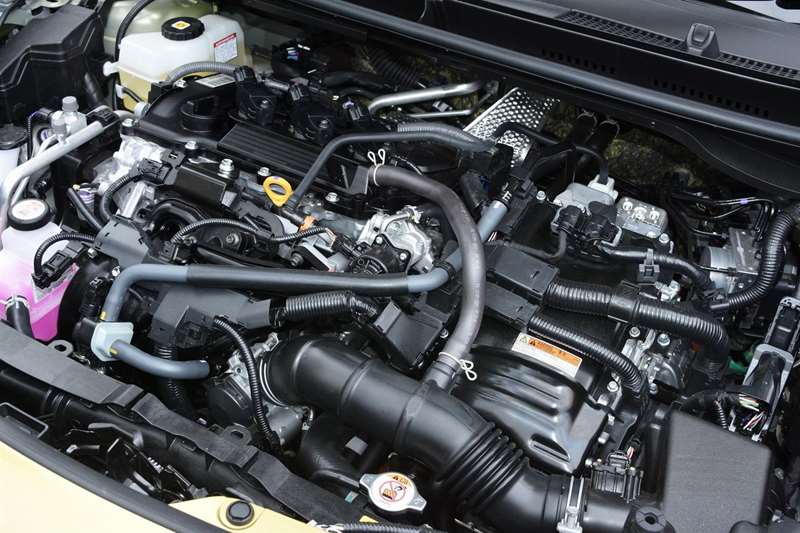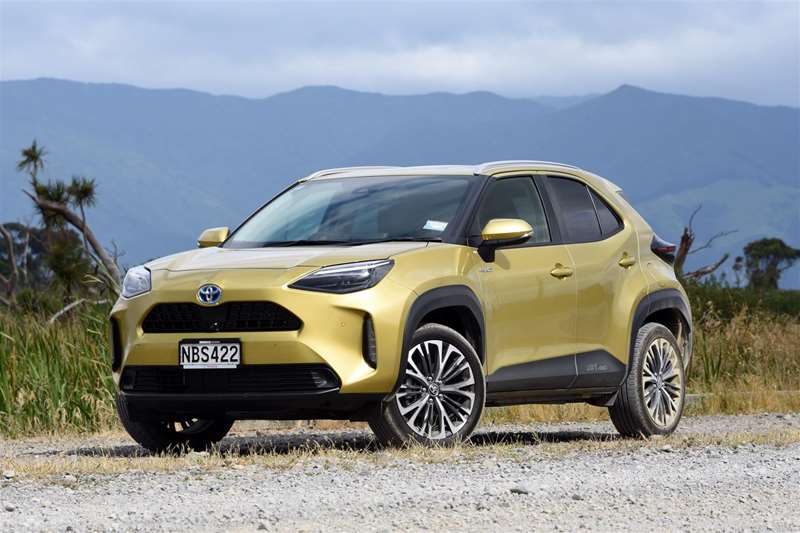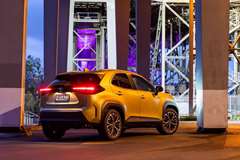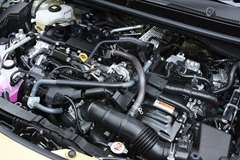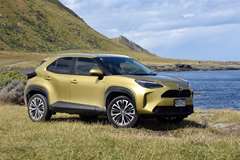David Thomson discovers there is more to Toyota's Yaris Cross than its name would suggest.
What’s new?
When Toyota launched its new Yaris last year, the company’s New Zealand boss predicted the higher-riding Cross model still in the pipeline at that point could eventually become a stronger seller than the conventional hatchback.
That call certainly seems in tune with the times: higher riding vehicles, commonly called lifestyle SUVs or crossovers, are dominating the new passenger vehicle sales charts these days, outselling conventional cars in New Zealand by a staggering margin of three to one last year.
The Yaris Cross name sells the new arrival a little short because it is far more than a high-riding version of the standard Yaris.
Most obviously, the Yaris cross and hatch do not share a single exterior panel. The Cross is taller (by 90mm), wider (by 20mm) and longer (by 240mm).
The two vehicles do use the same underlying platform and share an identical wheelbase. The mechanical options are also identical, comprising either 1.5-litre petrol power, or a hybrid combining essentially the same Atkinson cycle petrol engine with a lithium-ion battery-powered electric motor system. The Yaris Cross is offered with all-wheel drive in some markets (including Australia) but for now, at least, the Kiwi line-up is —like the Yaris hatch — entirely front-wheel drive.
That line-up comprises four models, the entry level $29,990 GX being the sole pure-petrol offering. The Yaris Cross hybrid costs $33,390, while the Limited (as tested) is offered for $38,990, or $500 more for a two-tone finish.
The hybrid holds particular interest because while buyers are spoilt for choice with conventionally powered compact SUVs, the listof those brands offering partial (or indeed fully) electric propulsion previously comprised just the Kia Niro (in hybrid, plug-in hybrid or fully electric guise).
What’s it look like?
The Yaris Cross was styled jointly by Toyota’s European and Japanese design studios. Front of mind was the reality that appearance is akey factor globally behind customer choice in the compact SUV sector, and that the current preference is for such vehicles to be immediately identifiable as an SUV.
A blunt nose, large squared-off wheel arches and relatively tall cabin provide the desired chunky SUV effect. There’s a nod to the hatch in the horizontal arrangement of the taillights and rear screen, but the Yaris Cross has stronger visual links to its larger SUV siblings, the C-HR and RAV4. Common elements, albeit executed slightly differently, include some angular lines and quite elaborate detailing. Like most crossovers, the Cross also features plastic cladding around its wheel arches and flanks.
The Limited picks up some external adornments denied to thebase-model GX, including LED rather than halogen lights and 18-inch rather than 16-inch alloy wheels. Plus, of course, there’s the Limited option of a two-tone paint finish.
What’s it like inside?
There’s much more that’s familiar from the Yaris hatch inside the cabin than outside it. The shared elements are mainly up front and include the dash layout, pin-stripe chrome highlighting, multifunction steering wheel, semi-digital instrument cluster and seven inch centre-mounted touchscreen.
The same preponderance of hard-touch plastics feature too, well put together of course (because this is a Toyota), but which mean the cabin is not quite as plush as those of some Yaris Cross rivals. I found the test car’s brown-beige-themed trimming nostalgic; my grandma had a loungesuite in similar colours in the 1980s.
Upfront seating is noticeably more upright in the Yaris Cross and the combination of light trim colours above the waistline, plenty of headroom and a more expansive glass area make for a brighter and airier ambience than the hatch. Storage includes a pull-out bin under the driver’s seat, a tray under the touchscreen and an array of bins and cup holders on the centre console and in the doors, but the Yaris Cross would be better yet with some grippy rubber surfaces in those spaces to stop objects sliding around.
The rear seats are accessed a little awkwardly by quite small doors that do not open wide, but there is plenty of space in the back once aboard. Drivesouth’s test involved a full day with two adults in the back and they were impressed by the amount of room, comfort and good visibility provided from their seats, though noting the absence of rear air vents.
Boot space takes a firm step up to 390 litres from the Yaris hatch’s 270 litres, which places the Cross among the compact SUV class leaders for luggage capacity.
Apower-operated tailgate with hands-free activation provides easy boot access on the Limited. There’s also a clever split-floor system that provides a hidden underfloor cargo space, along with an extended flat floor when the rear seats are folded forward.
What comes as standard?
As with the Yaris hatch, the Yaris Crosstakes a high safety specification: adaptive radar cruise control, lane-keeping assist, auto dipping headlights, a reversing camera, blind spot monitoring and rear and crosstraffic assist. Toyota’s pre-collision safety suite is included, providing autonomous emergency braking, pedestrian and cyclist detection, emergency steering and intersection turn assist. The Limited adds a full panorama camera and head-up display to the package.
The seven-inch centre touchscreen and associated ICT interface is standard from entry level too. It operates in conjunction with a six-speaker audio system featuring voice recognition and Apple CarPlay/ Android Auto smartphone mirroring, alongside the usual Bluetooth and plugged connectivity option. As on the hatch, while not state of the art in terms of functionality or graphics, the touchscreen system works well enough, and the only real niggle is the provision of just one USB plugin point.
The Limited adds satellite navigation, smart keyless entry, full climate control, synthetic leather trim for the seat bolsters, seat heaters upfront, power adjustment for the driver’s seat and rear privacy glass.
What’s it like to drive?
The Yaris Cross hybrid’s peak outputs of 85kW of power and 141Nm of torque are quite modest by compact SUV standards, particularly in respect of the latter figure. The maximum torque from zero revs characteristic of the Yaris Cross’ electric motor does close the gap somewhat when translating those outputs to real-world performance, but even so this is not a vehicle to choose for accelerative vim or sporty mechanical character.
That said, while the petrol engine becomes a little rowdy when worked hard, the hybrid system is pleasantly refined when driving in an everyday manner, and it is responsive at light-to-moderate throttle openings. Economy is the obvious payback: most conventionally powered rivals manage standard-cycle returns either side of 5.5l/100km; the Yaris Cross hybrid’s rating of 3.8l/100km is more than 30% superior, and is accompanied by an equivalent reduction in CO2 emissions. One might not enjoy quite that advantage on the open road, but the payback around town should, if anything, be even greater.
There’s a nimble, darting character to the Yaris hatch that makes it a fun steer both around town and down winding backgrounds. The taller, heavier Yaris Cross doesn’t offer the same level of driver engagement with any attempts at serious press-on driving reined in by body roll and benign understeer. The lane departure system can irritate with its frequent sounding of warnings on narrow two-lane tarmac roads too.
On the other hand, the higher-riding and more softly sprung Yaris Cross hybrid is a much more comfortable proposition for extended highway cruising. Though very clearly a high-riding car dynamically (rather than a small off-roader) it takes gravel back roads in its stride, soaking up with aplomb the corrugations that are a feature of many such routes.
Verdict
Less focused but abetter allrounder than the hatchback from which it is derived, the Yaris Cross is a highly competent addition to the everswelling ranks of the compact SUV. Choosing the hybrid over the conventional petrol model locks in the economy gains that are among its most appealing features.

